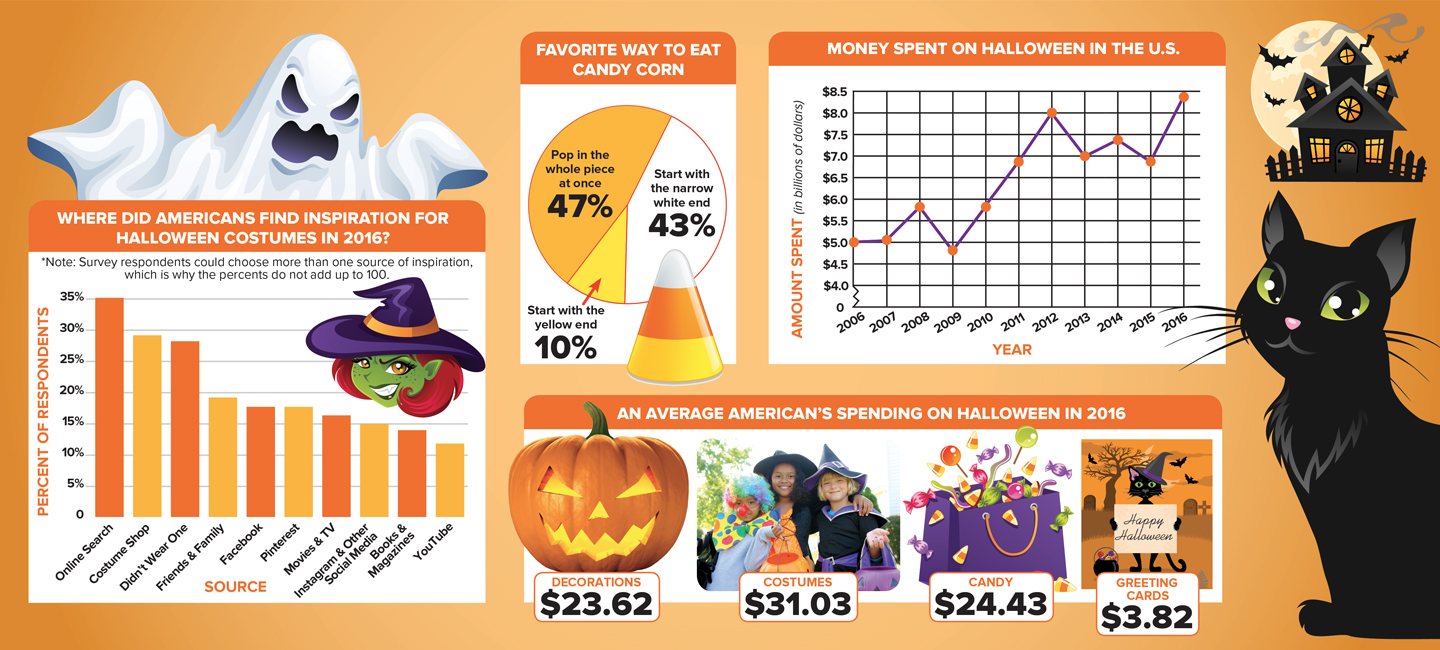On October 31, the streets will be crowded with superheroes, witches, ghosts, and more, all celebrating Halloween. But this modern-day holiday has ancient origins. It can be traced back to the ancient Celtic festival of Samhain (SAH-ween).
More than 1,000 years ago, the Celtic people lived throughout Europe. They believed that once a year on Samhain, ghosts came to visit the living. They said that wandering spirits roamed the land along with fairies, witches, and demons. To help the spirits, the Celts left food and drinks on their doorsteps and lit bonfires. Eventually, some people started dressing up as imaginary creatures and performing entertaining acts in exchange for food and drink.
In the 19th century, immigrants from Ireland and England brought Halloween to America. Slowly, Halloween became more and more popular. Now, Christmas is the only holiday that Americans spend more money on.
In 2016, Americans spent more than $8 billion on Halloween, with the biggest chunk going to costumes—including outfits for pets! According to the National Retail Federation, Americans spent $350 million in 2016 on costumes for their pets.
Take a look at our charts and graphs to find out more about celebrating our favorite spooky holiday.
October 31 is Halloween. That night, the streets will be crowded with superheroes, witches, ghosts, and more. Everyone will be celebrating. But this modern-day holiday has ancient origins. It can be traced back to the ancient Celtic festival of Samhain (SAH-ween).
More than 1,000 years ago, the Celtic people lived throughout Europe. They believed that ghosts came to visit the living. This happened once a year on Samhain. On that night, they said wandering spirits roamed the land. They were joined with fairies, witches, and demons. To help the spirits, the Celts left food and drinks on their doorsteps. They also lit bonfires. Eventually, some people started dressing up as imaginary creatures. They also performed entertaining acts. In return, they got food and drink.
In the 19th century, immigrants from Ireland and England brought Halloween to America. Slowly, Halloween became more and more popular. Today, it’s a big hit. The only holiday people spend more money on is Christmas.
In 2016, Americans spent more than $8 billion on Halloween. The biggest of money was spent on costumes-including outfits for pets! According to the National Retail Federation, Americans spent $350 million in 2016 on costumes for their pets.
Take a look at our charts and graphs. They’re you’ll find out more about celebrating our favorite spooky holiday.

